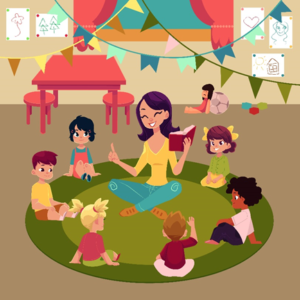Related Products
For Professionals
- Amplification
- Assessment of Student Skills, Challenges, Needs
- Early Childhood: Infants, Toddlers, Preschool
- Hearing Loss – Identification, Impact and Next Steps
- IDEA Law Summary Information
- Language and Speech Development Issues
- Legal Issues in Serving Children with Hearing Loss
- Listening (Auditory Skills) Development
- Planning to Meet Student Needs
- Self-Advocacy Skills for Students with Hearing Loss
- Self-Concept: How the Child with Hearing Loss Sees Himself
- Social Skills
- Speech Perception & Learning
Related Teacher Tools Takeout Items
The Power of the Read-Aloud

- The ability to read empowers success!
- Readers come from readers – those children whose parents themselves read and made a habit of reading daily to their child/children, have a higher interest in reading.
- Better reading ability leads to higher education which can be tied to longer life.
- The inability to read costs – from high school drop-out rates, to colleges that have to offer remedial reading courses, to lower paying jobs, to having fewer people in the workforce.
The ability to read is empowerment; it is self-confidence; and above all, it is independence. Children begin their appreciation for books and stories in the arms of their parents and caregivers. By the time children are school-aged, the love of hearing/seeing stories read in the home is transferred to the classroom. It makes our job of teaching so much easier.
But for students with hearing loss, listening to stories sometimes takes more time and effort—more effort to hear and see, to process, and finally to comprehend the information presented. It is of equal importance that we expend the time and effort to make hearing, seeing, processing, and comprehending a bit less difficult. To accomplish this:
Do
- Familiarize yourself with the book before you read it to the child/group.
- Read aloud/sign the title, author’s name, and illustrator’s name every time you read no matter how many times you read the same book.
- Tell the child/group something about the writer and illustrator.
- Take note of the text elements and adjust the emotional register of your voice/signs/body language to accompany the feelings of the characters or the intensity of the plot.
Don’t
- Make every page in the book a time to quiz the child/group.
- Read too fast.
- Feel like every book has to be tied to the curriculum.
- Use reading as a punishment.
How can you critique and/or improve your read-aloud skill?
Check your reading rate of speech: You will need a timer, a book of choice, and a computer with access to a speech to text feature such as Google documents. Open a blank document, enable the speech-to-text feature, start your timer for 1 minute, and start reading at your normal rate of speech. When 1 minute is up, stop reading, and check the word count. I did this recently, and found that I read at 160 wpm. Adults talk at approximately 200 words per minute, but most children only process about 125 words per minute. It took me a few tries to get my word count down to 125 words per minute. The slowest I felt comfortable reading was around 140 words per minute. I now know, like most adults, I need to slow down my read-aloud rate.
Check your enunciation: The speech-to-text feature is also a great tool if you want to check whether you are enunciating words properly. In Texas, we have a tendency to runallourwordstogether. Making a conscious effort to enunciate words properly, especially target words and phrases, is difficult but it can be done.

Check your body language or signing from the viewpoint of the child/group: Video record yourself reading and/or signing a book. It’s best if you can record yourself at the natural time you read to your students. Check your posture, the gestures you use, the sentence structure and signs you use. Turn the sound down and watch the recording. Does the story flow? Are the signs correct? Does your body language match the tone of the story? See principles of reading to Deaf children in ASL.
Check your engagement level: With proper permission, record yourself reading to your class or student so their reactions can be seen on the video. Are they interested? Are they engaged? Can they hear/see you? How many times are you stopping to quiz the audience? What kinds of questions are the students posing? How many times are you interrupted? An alternative to recording yourself is to ask a trusted colleague to observe you and give positive and constructive feedback. Have a short list of behaviors for the observer to focus upon.
Telling stories is an art. With practice it can be done well. When you think about it, there is a story waiting to be told in every subject area. Reading aloud doesn’t have to be confined to English Language Arts class. Stories of discovery and invention in science and math, stories of victory and loss in history and sports, stories of imagination and perspective in art, stories of overcoming the odds despite disability, race, gender, and society norms – the list is endless.
I like to close my student sessions with a story just for fun, allowing the student to choose the book from three or four I’ve brought along. Most of the time, it’s a positive end to our time and the books are remembered well when/if they are read again. Whatever the age of the students you serve, I encourage you to read-aloud to them.
Sources:
- Trelease, J. (2013). The read aloud handbook (7th). Penguin Books.
- Cole, E.B. & Flexer, C. (2016). Children with hearing loss: developing listening and talking. Plural Publishing.
- Hart, B. & Risely, T.R. (1995). Meaningful differences in the everyday experience of young American children. Brookes Publishing.
